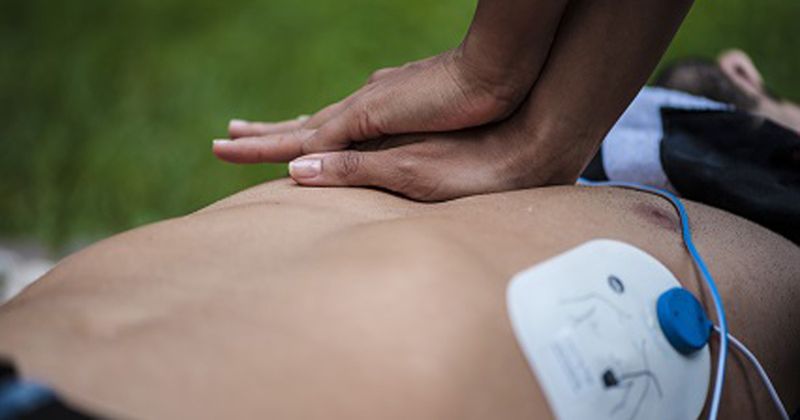Early epinephrine for out-of-hospital cardiac arrest linked to better outcomes vs. delayed
Administration of epinephrine within 4 minutes after first automatic external defibrillator shock for out-of-hospital cardiac arrest with initial shockable rhythm may improve survival and functional outcomes at discharge, data show.
“Ventricular fibrillation and pulseless ventricular tachycardia cardiac arrests are referred to as shockable rhythms, as electrical defibrillation are more likely to succeed in patients with these rhythms,” Shengyuan Luo, MD, MHS, resident in internal medicine at Rush University, said during a presentation at the American Heart Association Scientific Sessions. “Current American Heart Association and European Resuscitation Council guidelines on advanced cardiovascular life support recommend the use of epinephrine following electric defibrillation attempts using an AED in cardiac arrest resuscitation. Recommendations have been based mainly on two randomized clinical trials where epinephrine was administered after the third unsuccessful defibrillation attempt. Guidelines also acknowledged that the value of epinephrine's beta-adrenergic effects are controversial because they may increase myocardial work and reduce subendocardial perfusion.”

According to the presentation, the AHA guidelines state that it may be reasonable to administer epinephrine after initial differentiation attempts have failed in out-of-hospital cardiac arrest with a shockable rhythm, but also acknowledged that there is insufficient evidence to make a recommendation as to the optimal timing of epinephrine.
Researchers therefore conducted the present analysis to evaluate whether early epinephrine after first defibrillation attempt in patients with a shockable rhythm was associated with better outcomes.
The analysis included 6,416 adult participants in the Resuscitation Outcomes Consortium Epidemiological Cardiac Arrest Registry 3 with ventricular fibrillation and pulseless ventricular tachycardia out-of-hospital cardiac arrests from April 2011 to June 2015 (median age, 64 years; 80% men).
The main exposure was total minutes between first delivered electric shock and epinephrine administration.
Outcomes of interest included prehospital return of spontaneous circulation, survival to hospital discharge and favorable neurological outcomes as defined as modified Rankin scale score of 3 or less at discharge.
According to the presentation, 54% of participants had bystander-initiated CPR. Median time to first AED shock was almost 11 minutes.
Prehospital return of spontaneous circulation was achieved in 79.8% of participants; 19.3% survived to hospital discharge and 15.5% had favorable neurological outcomes at discharge.
Compared with the first minutes after initial AED shock, Luo and colleagues determined that the odds of prehospital return of spontaneous circulation were significantly lower after 8 minutes, the odds of survival to hospital discharge were lower after 5 minutes and likelihood of favorable neurological outcome at discharge was lower after 6 minutes. Therefore, the cutoff of 4 minutes was used to differentiate between early and late epinephrine administration.
Luo reported that the likelihood for all three outcomes was significantly lower among patients who received late epinephrine after initial shock compared with early epinephrine, regardless of whether the first shock was given within 10 minutes after emergency medical services dispatch, whether the cardiac arrest was witnessed and whether return of spontaneous circulation occurred after one AED shock:
- prehospital return of spontaneous circulation (OR = 0.61; 95% CI, 0.52-0.72);
- survival to hospital discharge (OR = 0.48; 95% CI, 0.4-0.56); and
- favorable neurological outcome at discharge (OR = 0.48; 95% CI, 0.48-0.69).
“In this study involving more than 6,000 patients with shockable initial rhythm out-of-hospital cardiac arrest, we showed that early compared to late administration of epinephrine following the first AED shock was associated with higher odds of prehospital return of spontaneous circulation, survival to hospital discharge and hospital discharged with favorable neurological outcome, controlling for known confounders and accounting for probability of treatment,” Luo said during the presentation.
“Limitations of this study include its observational nature; a North American study population, which may limit generalizability of our findings; and potential resuscitation time bias for which we’re currently conducting another set of sensitivity analysis to involve time-varying propensity score matching,” Luo said. “The preliminary findings are largely consistent with what have been presented.”

